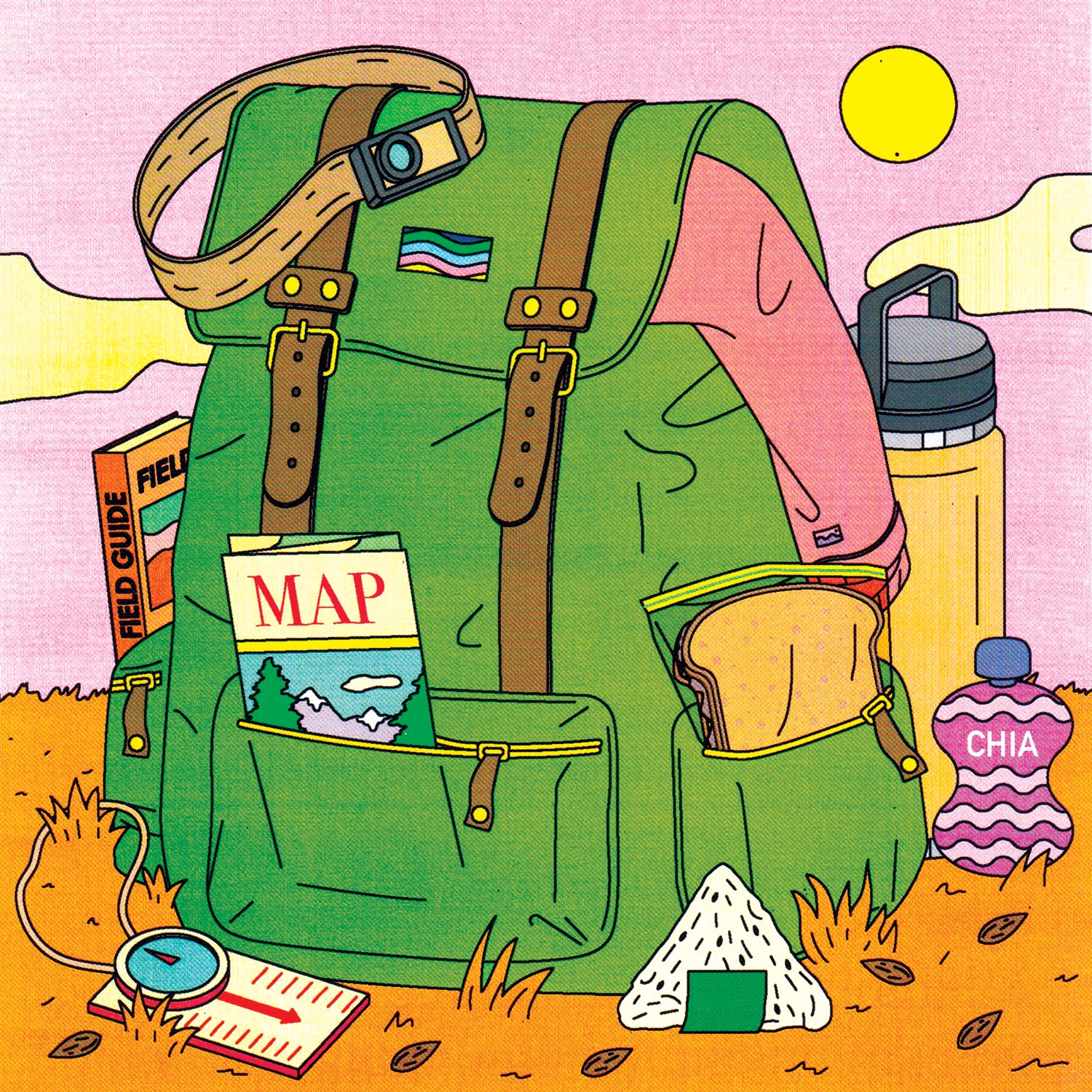Preparing for your first ambitious day hike can be intimidating. With these tips, you can focus less on what you need to bring along and more on the trail and the beauty around you.
Pack Smart
When loading your pack, place heavier items (like a second water bottle or a bulky jacket) at the bottom and closest to your back. Keep lighter stuff and anything you want easy access to, like snacks, near the top.
Keep a Paper Trail
A paper map and a compass are the most reliable navigation tools for unfamiliar terrain. Before you set out, write down your itinerary and estimated return time. Leave a copy in your car, and send one to a friend.
Stay Warm
Weather can change quickly, especially when you’re hiking at altitude. Pack a rain jacket and a warm midlayer, such as a puffy or a wool sweater. And don’t forget a space blanket. In an emergency, this heat-reflective piece of plastic can stave off hypothermia.
Fuel Up
PB&Js and trail mix are classics, but my favorite hiking snack is onigiri—Japanese rice balls with various fillings. (I like smoked fish and pickled plums.) Make sure to balance carbohydrates, protein, and salt, and always bring more than you think you’ll need.
Occupy Your Mind
Even spectacular hikes have moments of monotony. A field guide helps you identify flora and fauna along the way, and learning more about what you encounter on the trail is a great way to connect with your surroundings.
Light Your Path
Always pack a headlamp (I recommend the , $25), in case the hike takes longer than expected or something happens along the way. Don’t rely on the flashlight on your phone—you’ll need the battery in an emergency.
Plus: The Trick to a Good Day
Not all trail essentials are carried on your back. Ashley Manning, an outdoor guide based in Helen, Georgia, who posts encouraging tips , says that having a healthy mindset is just as important as what goes in your pack. “A lot of people who try hiking are so uncomfortable that they hate the experience,” she says. “It’s because they push themselves to the limit.” Slowly work up to bigger hikes until you find your sweet spot. Once you’re on the trail, focus on fully absorbing the experience. Also, make sure you leave everything how you found it. “Recreate responsibly,” says Manning. “Pack it in, pack it out. All of it.”


